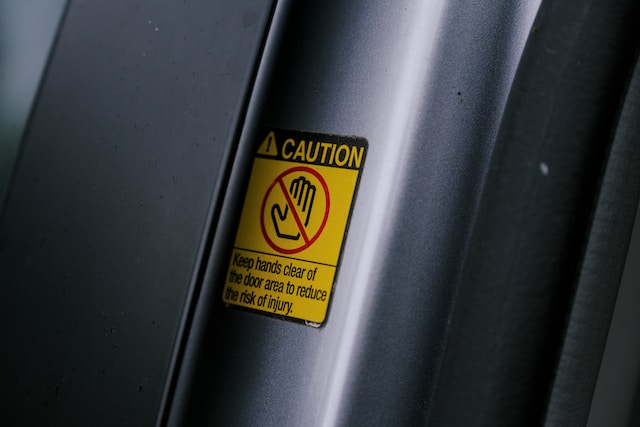Tips on Making Warning Labels Effective

In a previous post, we explored the origins of warning labels. We also defined warning labels as:
Messages that inform consumers about the possible dangers or risks of using a product or service. The warning label may be posted on the product or packaging materials, or in the use instructions.
Further, we mentioned that warning labels serve two principal purposes:
- To help consumers prevent injuries, illnesses, or damages from misuse or negligence of a product.
- To help manufacturers avoid lawsuits or claims from consumers who may experience harm or dissatisfaction from using their product.
So, now that we know what warning labels are and why they are posted on the products we purchase every day, the big question is: do we read them?
Apparently not. Robert Lilienfeld, a consultant for the packaging industry, says that the data shows “only 5 percent to 10 percent of consumers read [product] labels.”
However, there can be variances. For instance:
The type of product. Research suggests that consumers are more likely to read labels on products they consider dangerous. This would include medications or chemicals. Interestingly, the types of labels we read the least are on food and toys.
Label design. A well-designed warning label that is clear, concise, and visually appealing is read more often than a warning label that is “cluttered” or hard to read.
Graphics and images. We also mentioned in our earlier post that warning labels with graphics and pictures tend to get more attention than those that use just text.
Individual factors. The consumers’ habits and reading skills, language, concerns about the risks and dangers of using a product, and prior experience with a particular product, can all determine if a warning label is read.
Comprehension. Some studies report that even if we read a warning label, less than one-third of us fully understand the information presented or remember the warnings shortly after reading the label.
Making Warning Labels More Effective
For a warning label to be effective, GENflex Labeling Solutions advises our clients to adhere to the following:
- Make it easy to find the warning label. It should not be tucked away with other “fine print” about the product.
- Make it easy to read the label. The font size, color, spacing, and the degree of information provided in the warning label all influence whether someone reads the label. In place of words, use symbols (e.g., a picture of a skull and crossbones) to catch the consumers’ attention and encourage them to read the label.
- Make the dangers and consequences of using the product direct. What made the early cigarette warning labels in the 1960s so effective was that they were straightforward: continued smoking can cause cancer.
- Indicate the severity of the danger. Not all dangers are the same. A label that reads “Smoking cigarettes can cause cancer” indicates the seriousness of the consequences of smoking. However, a warning label on a skin cream that states “for external use only” does not indicate the consequences of ingesting the product.
- Use signal words but be creative about it. If you see the word “Danger” on a label, it means you face a severe risk of injury or death if you misuse the product. If you see the word “Warning” on a label, you face a moderate risk of injury or damage. The problem is that we see these words so often that we mostly ignore the terms, as mentioned. Using more descriptive, action-oriented, and urgent words can capture the consumer’s attention and prevent accidents or injuries.
Finally, consult with a qualified label manufacturer. After more than 32 years in business, GENflex Labeling Solutions can help you create effective warning labels, inform your customers about proper use and safety, and protect your customers from accidents or injuries.
GENflex Labeling Solutions has been a leading provider of packaging and labeling solutions for over 60 years. Our goal is to always be on time, on-spec and on budget. That’s how we help our clients succeed. Discover more here.

